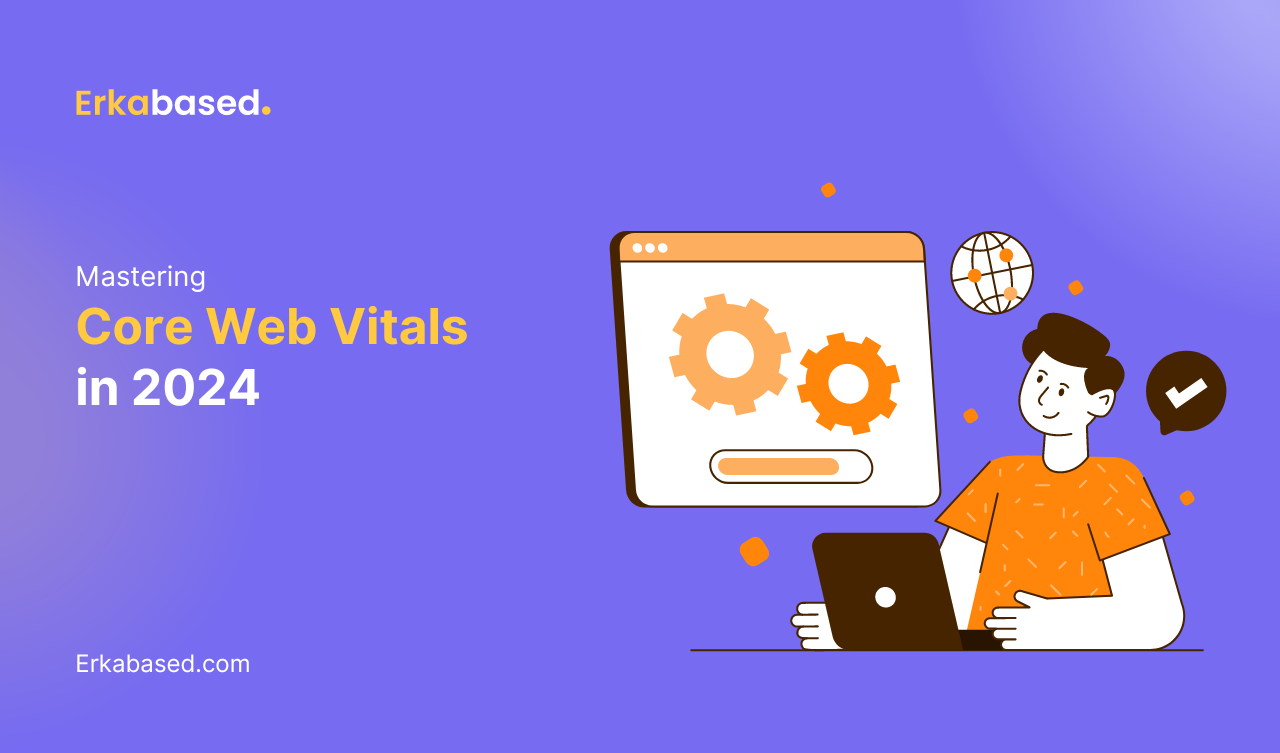Introduction to Core Web Vitals
In the fast-evolving digital landscape, website performance and user experience hold more importance than ever. Among the myriad of metrics that determine a website's success, Core Web Vitals stand out as critical determinants of user satisfaction and search engine rankings. As we move through 2024, understanding Core Web Vitals becomes essential for web developers, SEO specialists, and site owners alike. This blog will unpack the significance of Core Web Vitals, their latest updates, and how to optimize your site for these crucial metrics.
The Evolution of Core Web Vitals
Since their introduction, Core Web Vitals have undergone significant changes, reflecting advancements in web technologies and user expectations. In 2024, major search engines have refined these metrics to enhance their accuracy and relevance. The evolution includes more demanding thresholds and additional emphasis on mobile performance, ensuring that websites offer seamless experiences across all devices. Recognizing these changes and adapting your strategies is imperative to maintaining a competitive edge.
Understanding the Metrics
Largest Contentful Paint (LCP)
LCP measures the time taken for the largest content element to become visible within the viewport. Typically, this element is an image, video, or large block of text. For instance, on an e-commerce site, it might be a product image or a featured banner. Achieving an LCP under 2.5 seconds is ideal, ensuring users aren't left waiting for critical content.
Interaction to Next Paint (INP)
Replacing First Input Delay (FID), INP gauges the time from when a user first interacts with your site to the moment the browser responds by rendering the next frame. This metric focuses on the responsiveness of interactive elements like buttons and links. A good INP score is under 100 milliseconds, contributing to a smooth user experience.
Cumulative Layout Shift (CLS)
CLS tracks visual stability by measuring the unexpected layout shifts of visible content. For example, a sudden shift might occur if an image loads above a block of text, causing the text to move down. Maintaining a CLS score below 0.1 minimizes disruptions, ensuring a stable and predictable viewing experience for users.
Impact on SEO
Core Web Vitals play a pivotal role in SEO, directly influencing search engine rankings. In 2024, search engines place greater weight on these metrics, considering them as indicators of a site's overall quality. Websites with poor Core Web Vitals scores may see diminished visibility, while those excelling in these areas can expect enhanced rankings and increased organic traffic. Prioritizing Core Web Vitals is not just about compliance but about positioning your site for success in an increasingly competitive digital arena.
Improving Core Web Vitals
Optimize LCP
To enhance LCP, ensure fast server response times by using efficient server-side technologies and frameworks. Employ a content delivery network (CDN) to reduce latency and deliver content faster by caching it closer to the user's location. Optimize images by compressing them and serving them in next-gen formats like WebP . Additionally, consider lazy loading for images and videos to defer offscreen content, which can significantly improve initial load times. Implementing preconnect to important third-party origins and using critical CSS to prioritize above-the-fold content can also greatly improve LCP.
Boost INP
Improving INP, involves optimizing JavaScript execution to ensure that the main thread is not blocked by heavy tasks. This can be achieved by splitting long tasks into smaller, asynchronous tasks and minimizing third-party scripts that can slow down performance. Adopt techniques like code splitting and tree shaking to reduce the amount of code that needs to be processed. Ensure that interactive elements, such as buttons and links, are designed to respond quickly by leveraging techniques such as prefetching and preloading critical resources. Additionally, using web workers to offload expensive computations from the main thread can help maintain smooth interactions.
Enhance CLS
To reduce CLS, reserve space for dynamic content using CSS aspect ratio boxes and size attributes for images and videos. This ensures that the browser allocates the correct amount of space before the content loads, preventing unexpected shifts. Avoid inserting new content above existing content unless it's in response to a user interaction, as this can cause layout shifts that disrupt the user experience. Use font-display: optional when loading web fonts to avoid invisible text during font loading. Testing your site using tools like Lighthouse and Web Vitals extension can help identify and rectify layout shift issues. Additionally, ensuring that ads and embeds have static elements can significantly reduce CLS.
By focusing on these key areas, you can enhance your site's performance, user experience, and search engine rankings, positioning your site for success in an increasingly competitive digital landscape.
Case Studies
Discover how leading companies are driving powerful impacts in their businesses through digital optimization.
Vodafone in Italy improved their Largest Contentful Paint (LCP) by 31% through server-side rendering of critical HTML, reducing render-blocking JavaScript, and optimizing images. This led to an 8% increase in sales. The key takeaway is that A/B testing, especially server-side, is essential for measuring meaningful impact.
Now, consider iCook. By standardizing their ad unit sizes and optimizing ad script loading, they improved their Cumulative Layout Shift (CLS) by 15%, resulting in a 10% boost in ad revenue. The key takeaway is that although fill rates may initially decline, revenue ultimately increases with better ad viewability.
Lastly, Tokopedia, an e-commerce platform, enhanced its user experience by boosting its LCP by an impressive 55%, which led to a 23% increase in average session duration. They achieved this through server-side rendering of LCP elements and image optimization. Their experience underscores the importance of maintaining a performance monitoring dashboard to track progress and impact across teams.
Each of these case studies demonstrates how strategic implementation of various techniques can lead to impressive business results.
Looking Ahead
As we look ahead, Core Web Vitals will continue to evolve, potentially incorporating new metrics that further refine our understanding of user experience. Future trends may include deeper integration with artificial intelligence to personalize performance optimizations and an increased focus on accessibility metrics. Staying informed about these developments will be crucial for maintaining and enhancing your site's performance.
Conclusion
Core Web Vitals are more than just technical benchmarks; they are a reflection of your site's quality and user experience. By mastering these metrics, you position your site for better search engine rankings, higher user satisfaction, and sustained growth. As we navigate 2024, let Core Web Vitals guide your optimization efforts, ensuring your site not only meets but exceeds user expectations.
At Erkabased, we develop websites that excel in Core Web Vitals, ensuring your digital presence sets new benchmarks in user experience. Our team uses cutting-edge technologies and proven methods to optimize LCP, INP, and CLS, delivering fast-loading, responsive, and stable sites. From advanced image compression and CDN strategies to server-side rendering and JavaScript optimization, we cover every aspect of site performance. Superior user experience leads to increased engagement, higher conversion rates, and improved SEO rankings. Partner with Erkabased to elevate your website's performance and drive business success.



